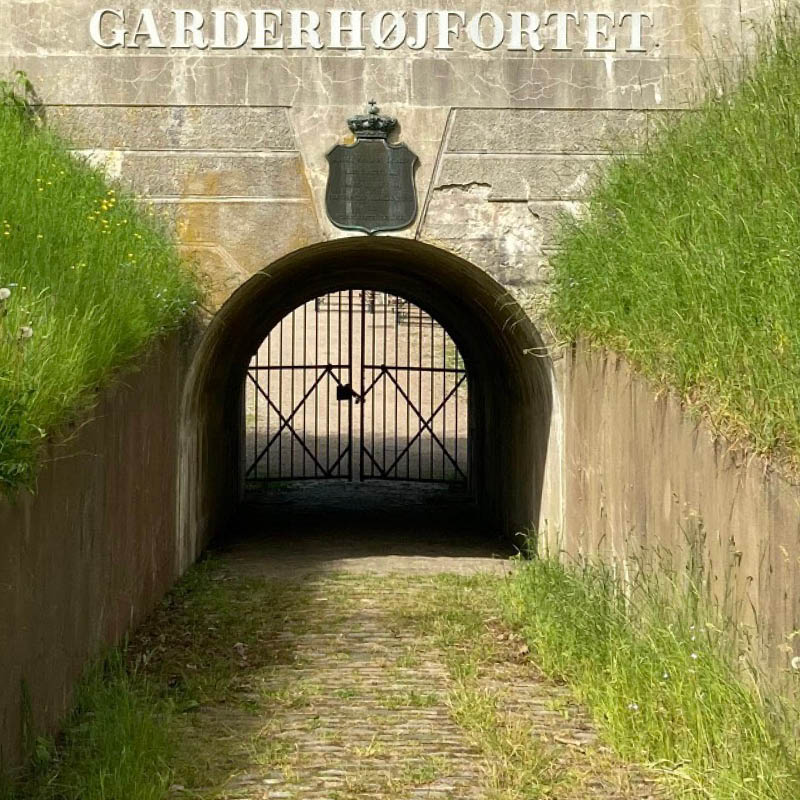The History
The fort was built between 1886 and 1892. It was the biggest of the fortifications around Copenhagen. It is the only one with its own infantry barracks. Garderhojfort had powerful twin cannons in special heavily armored towers. They were 15 centimeter model 1887 from Sweden. The fortress also had lesser artillery, disappearing turrets and machineguns.

The fortress itself was built in concrete. Above that was a small layer of dirt, covered by a layer of boulders, followed by a final thick layer of dirt. The idea was, that the enemy artillery would first detonate against the earth and then the boulders, all of which would absorb blows. This would help protect the concrete building.
The Garderhojfort was financed by private citizens. The money was collected by a number of foundations, among others: ”Den frivillige Selvbeskatning til Forsvarets Fremme”. The foundation gathered 1,5 million kr. in total in the years 1885-1893.


The Fortifications of Copenhagen
The newer fortifications were constructed after the defeat to the Germans in 1864, in an effort to protect the Danish capitol.
During the 1. World War, 50.000 soldiers manned the fortifications, as the Danish goverment feared a new German attack. However, after the war, the fortifications were outdated and most were discontinued. A few places were still in use until a few years ago, i.e. the Ejby Bunker, which was used by the Military Intelligence until 2004.
The project concerning a revitalization of the Fortifications of Copenhagen saw its start in 2007.
The partnership behind the project
The partnership consists of Realdania, Kulturarvsstyrelsen og Naturstyrelsen, who took initiative to revitalize the fortifications. 175 million kr. went in to the project to repair the fortifications and open them up to the public. In addition to this, the partnership established activities for schools, families, education and gathering of historic knowledge.


